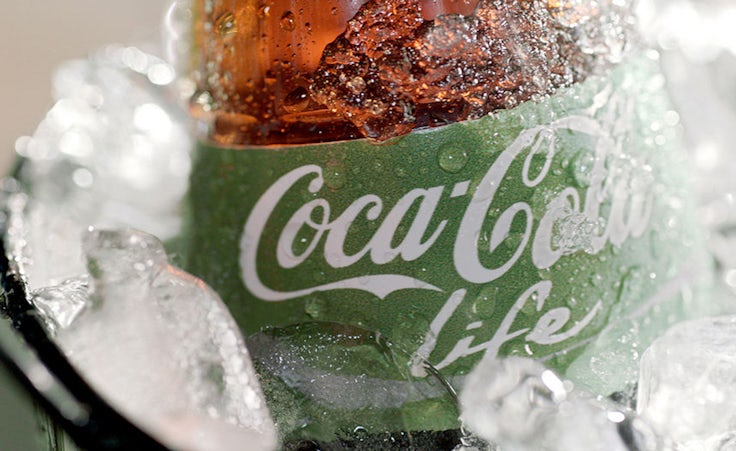Mark Ritson: Burberry’s tumbling profits show Christopher Bailey is overstretched
The luxury brand’s struggles raise questions over the wisdom of bringing creative direction and business strategy under one role.

At first sight one might assume that any CEO that can deliver £421m in profit from annual sales of £2.5bn is about to get a pretty juicy bonus. Nothing could be further from the truth at Burberry where current CEO Christopher Bailey has seen his 2015 package cut by 75% after the British luxury brand posted lacklustre results by its standards.
Part of the problem for Bailey is one of expectation. Ever since Rose Marie Bravo rescued the ailing house in 1997, brought it back to life and then handed the reins to Angela Ahrendts to continue the brand’s stellar performance, Burberry has been consistently successful. Since 2010 the brand has averaged annual growth of 7%.
Not anymore. Burberry announced in May that revenues had been flat for the last twelve months with profits plunging by 10%. Trouble has been brewing for a while at the company with its share price dropping by 35% in the last year.
More declines may be imminent. The official narrative from Bailey’s team is that comparable sales are actually up around the world if you exclude Hong Kong and Macau. That’s rather like me telling you I am a very good looking man apart from my face. Most luxury brands derive up to 30% of their sales from China and these two destinations dominate the retail scene over there. For Burberry the proportion is thought to be much higher and that’s a big problem.
Recent protests for more democratic rights in Hong Kong may well have helped the local Cantonese population to send a message to Beijing. But as Confucius one said, don’t fuck with mother China. The protests have enraged mainland China resulting in a dramatic reduction in the lucrative, cashed up domestic tourists that once turned Hong Kong and its nearby sister Macau into a mecca for luxury brands.
But overexposure to China is not the biggest issue right now for Burberry. The bigger concern is Bailey himself and his peculiar ascension to the checked throne. Back in 2000 he was an unknown designer working at Gucci when Rose Marie Bravo selected him to become the brand’s creative director. The accessible, supremely English designer with a genuine talent for outerwear was a perfect match with the Burberry brand DNA.
Perhaps more surprising was just how talented and successful Bailey’s eye for product would turn out to be. Over the next thirteen years Bailey became the world’s most consistent and successful creative director. When Angela Ahrendts left Burberry to run retail for Apple she shocked the fashion world by appointing Bailey as her replacement.
The modern world of luxury brand success has been built on partnerships usually between a creator and a manager. One inspires the product, the other stewards the brand – and together they make profits. While the creative director usually becomes the famous one, the importance and influence of the manager cannot be overstated. There would have been no Tom Ford without Dominic De Sole. No Armani without Galeotti. No Valentino without Giammetti.
In 2013 Bailey became the first creative director at a major luxury brand to step up and become its CEO. The move left many wondering whether a designer could become an executive and, equally importantly, whether a CEO could continue to dedicate enough time to designing to remain creatively successful.
As growth fades at Burberry there is a growing sense that the answer to both of these questions might be “No”. On the strategic side Bailey must now lead a product rationalisation that will see up to 20% of products killed and millions shaved from the operating model. Not something they train you for at Central St Martins. On the creative side, Burberry’s conversion of store visitors into customers is relatively weak – a sure sign that either service is flagging or there isn’t the right product in store to turn a browser into a buyer anymore.
Just as Bailey was once hailed as the saviour of the brand, he has now increasingly been blamed for its travails. “They should let Bailey do what he does best, which is design,” one investor told the Financial Times this week. “They need to make sure they use the real skills that he has. It feels like he has been overstretched in both positions”.
Perhaps. But it may not be possible for Burberry to fire Bailey the CEO and keep Bailey the creative director. As humble and self-effacing as Bailey is, and he is easily the nicest man or woman in fashion, even he would probably feel the need to walk rather than work for his replacement.
If profits don’t improve quickly Burberry faces an uncertain 2017 and the old luxury credo that two heads are usually better than one may prove, once again, prophetic.
We’ve teamed up with award-winning columnist and Professor Mark Ritson to bring you a new online learning experience. The MW Mini MBA in Marketing is a CPD accredited, MBA standard course. Cover the same core modules as leading MBA programmes, in just 12 lessons, it will give you the tools you need to do your job better. For more information click here.








